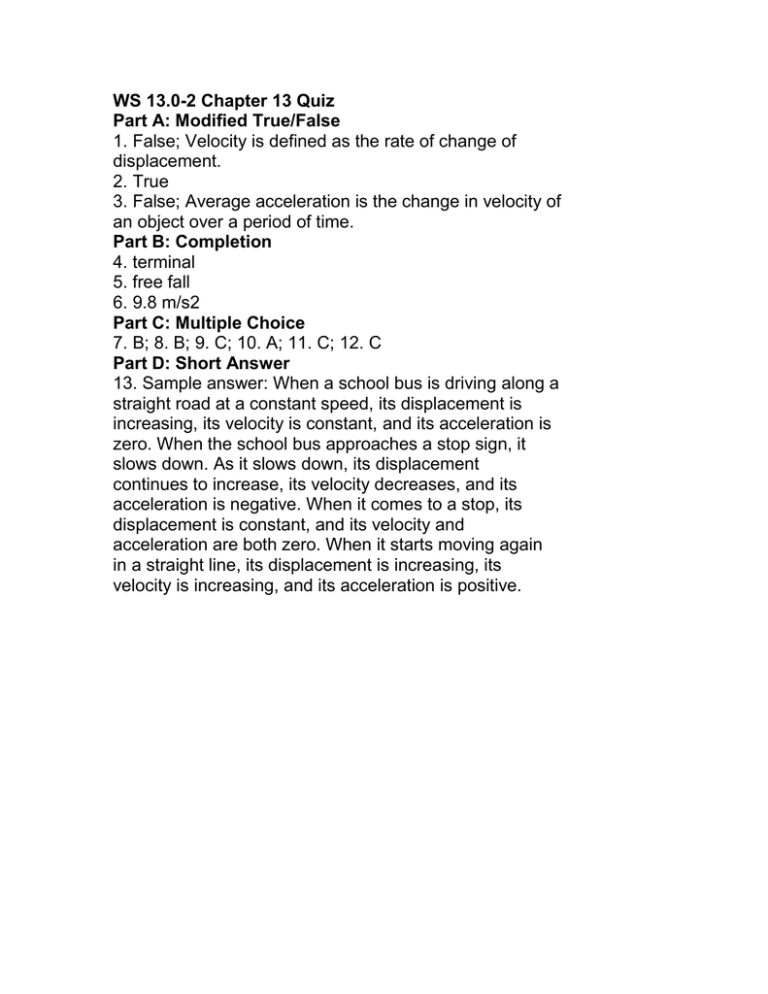WS 13.0-2 Chapter 13 Quiz Part A: Modified True/False displacement.
advertisement

WS 13.0-2 Chapter 13 Quiz Part A: Modified True/False 1. False; Velocity is defined as the rate of change of displacement. 2. True 3. False; Average acceleration is the change in velocity of an object over a period of time. Part B: Completion 4. terminal 5. free fall 6. 9.8 m/s2 Part C: Multiple Choice 7. B; 8. B; 9. C; 10. A; 11. C; 12. C Part D: Short Answer 13. Sample answer: When a school bus is driving along a straight road at a constant speed, its displacement is increasing, its velocity is constant, and its acceleration is zero. When the school bus approaches a stop sign, it slows down. As it slows down, its displacement continues to increase, its velocity decreases, and its acceleration is negative. When it comes to a stop, its displacement is constant, and its velocity and acceleration are both zero. When it starts moving again in a straight line, its displacement is increasing, its velocity is increasing, and its acceleration is positive. WS D-1 Unit D Quiz Part A: Modified True/False 1. False; The Greek letter _ or delta represents change. 2. True 3. True 4. False; An object traveling in uniform motion has no acceleration. Part B: Completion 5. scalar 6. length 7. speed 8. terminal velocity Part C: Matching 9. (c); 10. (d); 11. (a); 12. (b) Part D: Multiple Choice 13. D; 14. A; 15. D; 16. B; 17. B; 18. C; 19. C; 20. D; 21. D; 22. B; 23. B 426 Unit D Answer Key NEL Part E: Short Answer 24. Yes, an object could have started with a negative velocity, so the acceleration would be positive. Or, the object could have started with a positive velocity and have a negative acceleration.



